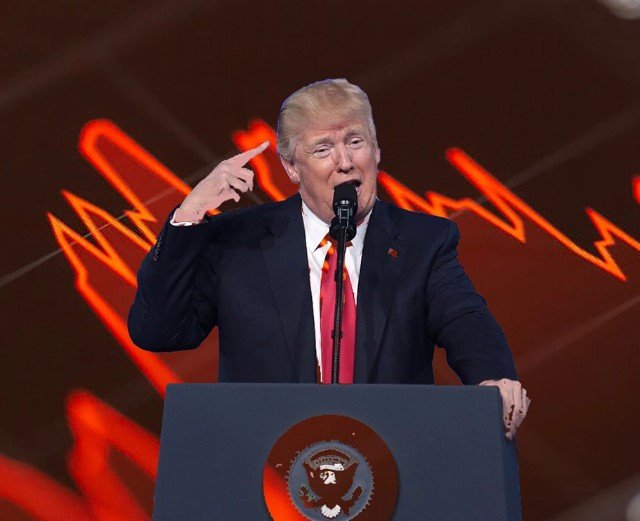Ottawa walks back digital levy as Trump signals new tariffs, Carney races to strike deal before July deadline
Canada has dropped its planned digital services tax just hours before it was set to take effect, bowing to pressure from the United States and hoping to rescue trade talks that appeared to be dead in the water late last week.
The decision marks a significant shift by Prime Minister Mark Carney’s government, which had previously pledged to press ahead with the levy despite threats from Washington. Now, with tensions easing slightly, both sides are back at the table—and staring down a ticking clock.
Digital tax ditched just before launch
The controversial 3% tax was designed to target global tech giants that generate revenue from Canadian users, with companies like Alphabet, Meta, and Amazon squarely in the crosshairs.
It would have applied to any firm earning more than $20 million from Canadian digital activity, and payments—totaling an estimated $3 billion—were set to be retroactive to 2022.
But the timing couldn’t have been worse.
Just three days before the tax came into effect, Donald Trump lashed out, accusing Canada of a “direct and blatant attack on our country.” By Sunday, he’d doubled down on the threat, promising tariffs on Canadian exports unless Ottawa backed down.
Carney blinked.

Trade deal back on—but barely
Late Sunday night, Canada’s finance ministry confirmed the tax was being “rescinded immediately,” and both sides had agreed to restart talks with the goal of reaching a new trade agreement by July 21.
It’s a narrow window, and a politically charged one. Trump is under pressure from protectionist voices within his own party ahead of the Republican convention in Milwaukee. Carney, meanwhile, faces criticism at home for caving to US threats.
Still, Canadian officials insist the pause on the digital tax is temporary.
“This government will always prioritize Canadian workers and businesses,” Carney said in a statement. “But we also know when to hold firm and when to be pragmatic. Right now, we need a deal.”
Why the tax mattered—and why it had to go
For Canada, the digital levy wasn’t just a revenue tool. It was meant to be a stand-in for broader reforms to global tax rules—reforms that have stalled internationally despite years of OECD-led efforts.
The logic was simple: if companies are making money from Canadian users, they should be taxed here. But the reality is far more tangled.
Here’s how the numbers looked for US tech firms:
| Company | Est. Canadian Revenue (2024) | Est. Digital Tax Owed (3%) |
|---|---|---|
| Alphabet (Google) | $2.3B | $69M |
| Amazon | $1.8B | $54M |
| Meta (Facebook) | $1.2B | $36M |
Small by US standards, but enough to provoke a trade firestorm.
Trump’s tariff threat hits Canadian nerves
Trump’s playbook hasn’t changed much since 2018: pressure, threaten, repeat. And this time, the warning was crystal clear—tariffs were coming if Canada didn’t back down.
He accused Ottawa of trying to “squeeze American innovation” and vowed to “protect our digital economy at all costs.”
Carney’s dilemma was obvious. Stand firm and risk a full-blown trade war—or concede and gamble that talks could be salvaged.
In the end, the cost of confrontation outweighed the political optics of retreat.
Pressure building on both sides
Despite the heated rhetoric, sources on both sides say the path to a deal remains open. But it’s anything but straightforward.
A senior Canadian trade official, speaking on background, said Ottawa had received informal assurances from the White House that tariffs would be paused—for now—as long as negotiations moved quickly.
In Washington, aides to Trump confirmed he would “evaluate Canada’s actions over the next two weeks.”
That sets up a tense stretch heading into mid-July.
One Canadian official summed it up like this: “We bought ourselves time. Nothing more.”
What’s next for the digital tax?
For now, it’s off the books—but not off the agenda.
Finance ministry staff have been told to keep digital tax mechanisms “on standby” in case talks break down again. And Carney’s office has quietly indicated it could revive the policy in 2026, depending on how international tax reforms progress.
• Some analysts believe this temporary retreat might spark movement at the OECD, where countries have been locked in a slow-moving debate over how to tax multinational tech firms.
There’s also political risk at home.
The tax was popular with voters frustrated by what they see as tax avoidance by US digital giants. Rolling it back, even temporarily, could cost Carney political capital—especially as his government faces mounting pressure to raise revenue without hiking personal taxes.
Business lobby breathes a sigh of relief
Canadian tech firms and business groups were largely supportive of the tax’s removal—if only because they feared blowback from the US would outweigh any potential gain.
The Business Council of Canada said in a statement that “while digital fairness remains an important goal, provoking tariffs during fragile trade talks would have been a mistake.”
Meanwhile, executives at Amazon and Alphabet were said to be “cautiously optimistic,” according to two industry sources briefed on the matter.
But skepticism remains.
“This may all blow up again in two weeks,” said one Toronto-based trade lawyer. “We’re basically living day-to-day with this file.”








